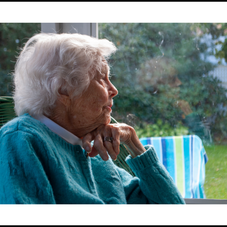Controlling Enteric Infections
All cases of gastroenteritis or enteritis should be regarded as infectious until a microbiological cause has been excluded. A liquid stool is liable to result in contamination of hands and the environment causing the dissemination of fecal organisms. Conversely, agents causing gastroenteritis may infect without causing symptoms or be excreted for long periods of time after recovery from clinical illness. Under these circumstances, transmission is unlikely providing that good personal hygiene is practiced.
All cases of gastroenteritis or enteritis should be regarded as potentially infectious and should normally be excluded from work or school until the person is free of diarrhea and vomiting.

It is particularly important to assess the risk of spreading infection in the four groups of persons below in whom exclusion and clearance cultures may need to be considered. The circumstances of each case, carrier or contact in these groups should be considered individually and factors such as their type of employment, provision of sanitation facilities at work, school or institution and standards of personal hygiene should be taken into account. In some cases it may be necessary to transfer a worker temporarily to duties in which she/he does not pose a special risk or to make special sanitary arrangements to reduce the risk. Persons who are not in risk Groups 1 and 2 may return to work when the diarrhea has ceased and they feel well enough to do so.
FOUR GROUPS WHOM EXCLUSION AND CLEARANCE CULTURES MAY NEEDED
Group 1: Food handlers whose work involves touching unwrapped food to be consumed raw or without further cooking. Food handlers who do not touch food in this way are not considered to pose a special risk.
Group 2: Health care, nursery or other staff who have direct contact, or contact through serving food, with highly susceptible patients or persons, in whom an intestinal infection would have particularly serious consequences.
Group 3: Children < 5 years attending nurseries, play groups, nursery schools, or other child care groups.
Group 4: Older children and adults who are unable to implement good standards of personal hygiene (e.g., the mentally ill, the handicapped, the infirm aged or those in circumstances where hygienic arrangements may be unreliable (such as temporary camps housing displaced persons).
Persons not in these groups present a minimal risk of spreading gastrointestinal illness if they are healthy and have normal well-formed stools.
Enteric Precautions: Enteric Contact Precautions is being used for patients who have active infection with C. difficile, rotavirus, or norovirus. The sign helps remind staff that soap and water hand washing must be performed instead of using an alcohol-based hand rub. Alcohol is not effective in removing these pathogens from the hands.

Enteric Contact Precautions Diseases Requiring Enteric Contact Precautions
C. difficile Norovirus Rotavirus
1. A private room is required but no special room air pressure is required.
2. Nursing staff must ensure that family members and visitors follow the indicated precautions including soap and water hand washing.
To Discontinue Enteric Contact Precautions:
1. C. difficile: No laboratory tests are required. Isolation may be discontinued once diarrhea has stopped.
2. Norovirus: No laboratory tests are required. Isolation may be discontinued 48 hours after symptoms have resolved.
3. Rotavirus: Symptoms must have resolved and two negative stool samples have been finalized as negative for rotavirus.
Elements of Enteric Precaution:
1. Handwashing: Thorough hand washing and drying is the most important factor in preventing the spread of gastrointestinal infections. This must be carried out by attendants (doctors, nurses, relatives, etc.) after handling patients, their bedding, clothing or sick room equipment, and again before preparing or serving food. Patients and attendants must always wash their hands after defecation or urination, and before meals. Towels must not be shared.
2. Disposal of excreta: In the home, the patient should use a flush toilet. If urinals and bed pans have to be used, the attendant should, if possible, wear disposable plastic gloves and must thoroughly wash hands after attending the patient.
Soiled clothing and bed linen should be washed in a domestic washing machine with a “hot cycle”. If the amount of soiling makes this impractical, as much fecal material as possible should be flushed away in running water, preferably into the toilet bowl. Presoaking in a household disinfectant may also be used to reduce the contamination. Diluted phenolic or hypochlorite preparations are suitable. Plastic gloves should be worn if possible and the hands must be thoroughly washed afterwards.
3. Disinfection: Toilet flush handles, sink taps, and washroom door handles should be cleaned at least daily, if not more frequently. Toilet seats should be wiped with diluted hypochlorite disinfectant after each use. These precautions are especially important in grade schools, nursery schools and residential institutions. Bed pans and urinals should be emptied into the toilet bowl, washed with disinfectant, and rinsed.
4. Education: Everyone should be instructed in personal hygiene, and in the hygiene of the preparation and serving of food. This teaching should be reinforced in those suffering from, or who are contacts of, patients with intestinal infections.
NOTE: In some remote communities it is not possible, at present, to institute appropriate enteric precautions in the home. When water supplies and sewage disposal facilities are inadequate, every effort should be made to ensure, as a basic minimum, that adequate handwashing is possible and is encouraged. Specifically, in the home, water for drinking purposes should be stored in a covered container with a spigot dispenser. The use of a common drinking cup is to be discouraged. Water for other purposes can be kept in an uncovered receptacle but should be stored well away from the drinking water. Ladles or “dippers” should not be used at any time.
Reference:
https://www.gov.mb.ca/health/publichealth/cdc/protocol/control.pdf





















